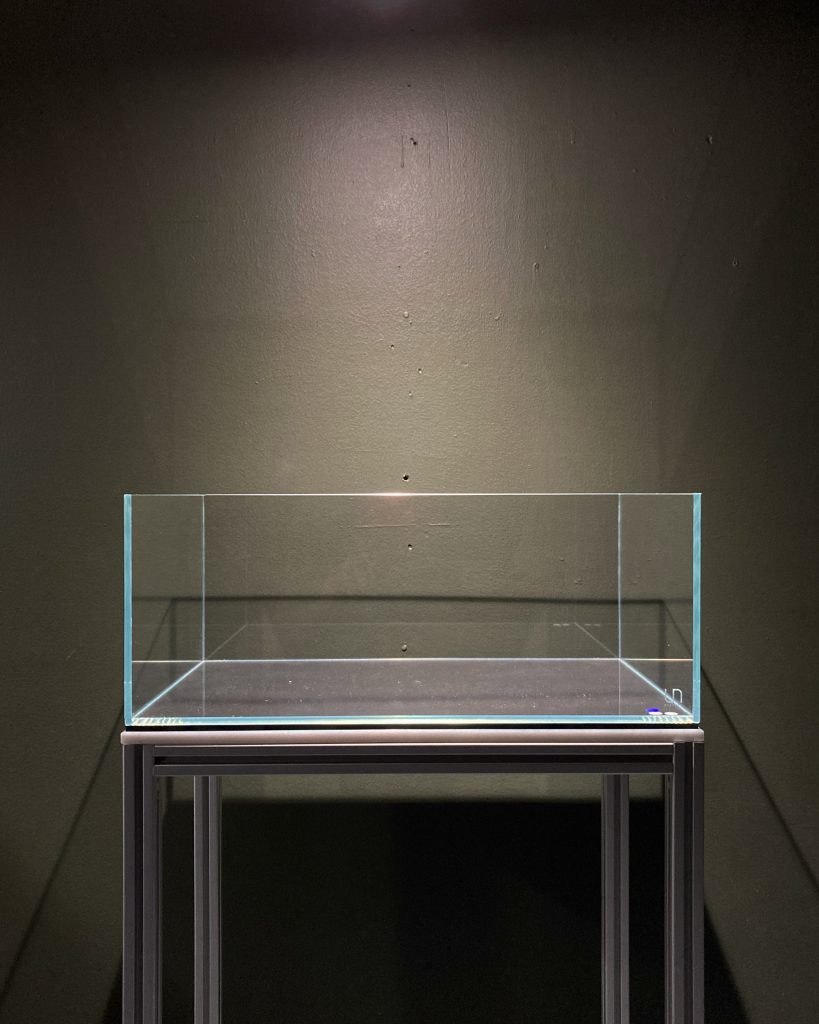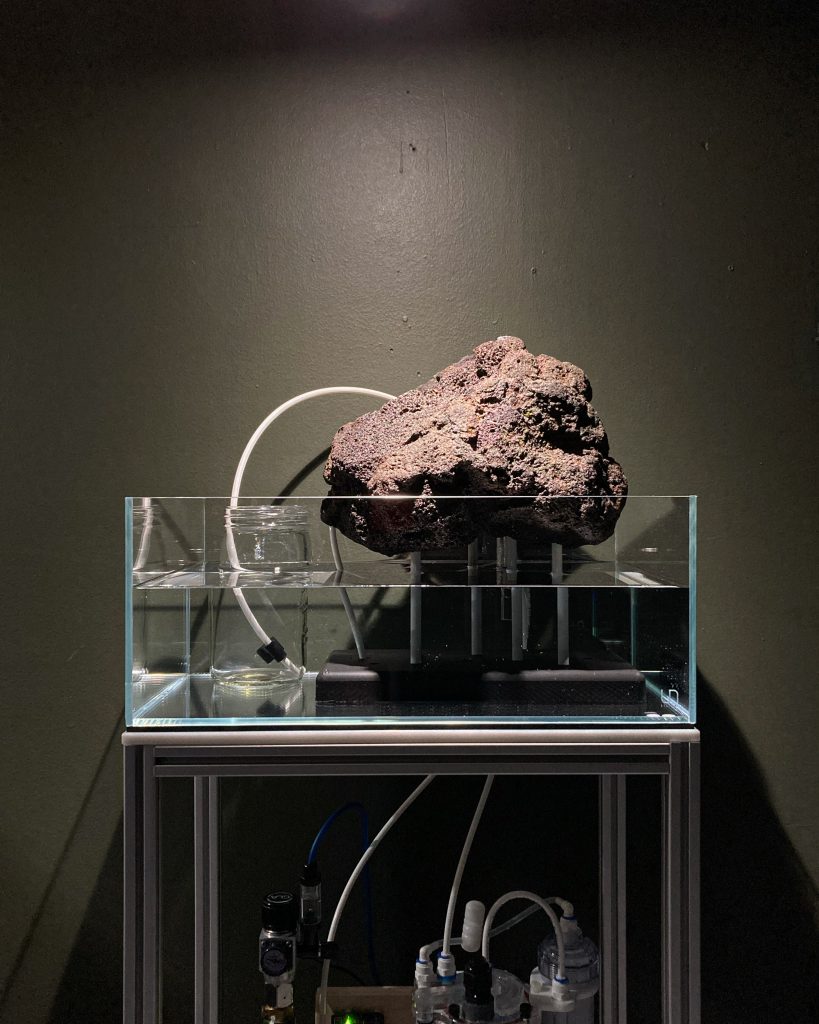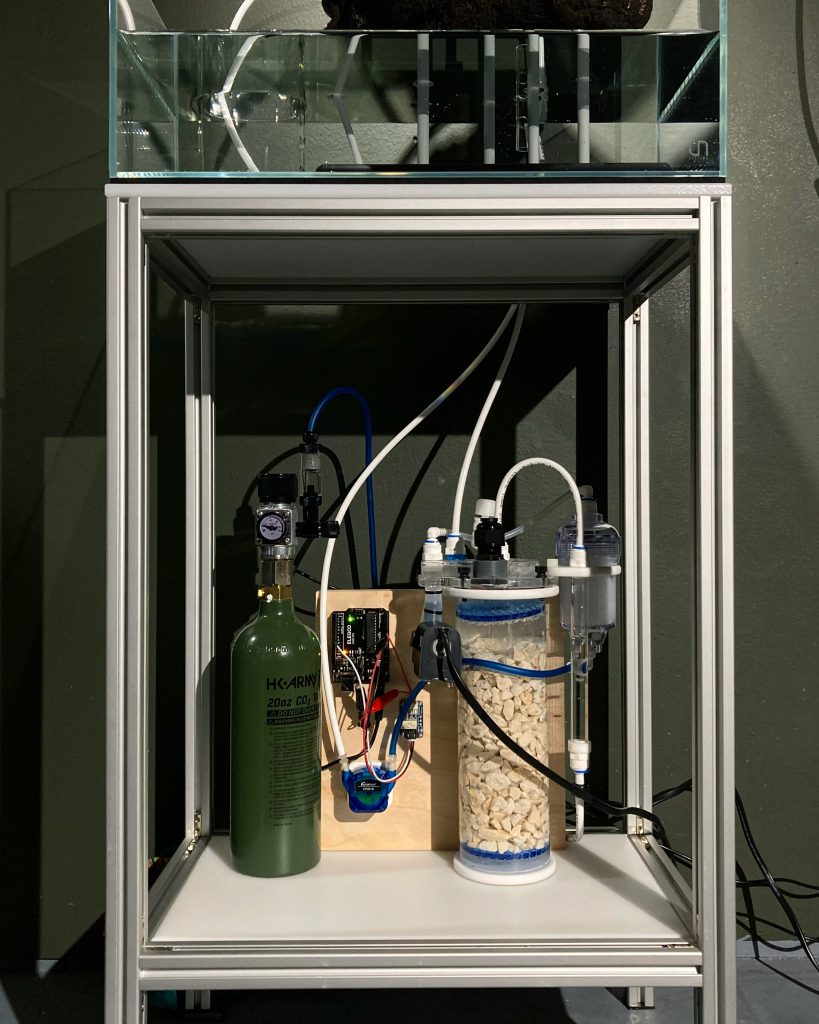hydrophyte
Member
- Joined
- 22 Aug 2009
- Messages
- 1,051
Tufa Waterfall Aquarium Biotope
Last fall I had an opportunity to visit a local tufa waterfall. In this very unique natural feature, new tufa rock forms where calcium and bicarbonate-enriched water tumbles down a cliff face. Water agitation causes rapid CO2 off-gassing, dropping pH and encouraging CaCO3 precipitation. This process is hastened further with dense growth of mosses and other organisms that strip additional CO2 via photosynthesis. The waterfall really was very impressive. We were there during a lunch hour and I didn't have a lot of time for photography, but I got a few quick photos.

Moss covered most of the waterfall, but where water dripped down at the base I found two different Green Algae as well as a fine Cyanobacteria crust.

With permission, I also collected a few small tufa rock, sediment and organism samples for this project. Here is the unidentified moss covering most of the tufa waterfall. This plant had an un-mosslike rough, sandpapery texture owing to the development of many CaCO3 crystals in its foliage.

I took a few botany classes in college, but never did venture into bryology. Does anybody have ID suggestions for this?
The tufa rock has a texture similar to that of the moss. I think you could consider this to be a kind of recently-formed Moss fossil.

Some microscopy images with 100x, 250x and 2500x magnification showing that Moss, a Green Alga and a Cyanobacterium.




The setup enclosure is a UNS 45S 5-gallon tank on top of an 80-20 stand I built with hidden corner brackets and some plastic parts cut out on the CNC router. The stand with this hardware seems just sturdy enough for this much weight. I would not put a larger tank on top without additional corner braces.

Thanks for reading!
Last fall I had an opportunity to visit a local tufa waterfall. In this very unique natural feature, new tufa rock forms where calcium and bicarbonate-enriched water tumbles down a cliff face. Water agitation causes rapid CO2 off-gassing, dropping pH and encouraging CaCO3 precipitation. This process is hastened further with dense growth of mosses and other organisms that strip additional CO2 via photosynthesis. The waterfall really was very impressive. We were there during a lunch hour and I didn't have a lot of time for photography, but I got a few quick photos.
Moss covered most of the waterfall, but where water dripped down at the base I found two different Green Algae as well as a fine Cyanobacteria crust.
With permission, I also collected a few small tufa rock, sediment and organism samples for this project. Here is the unidentified moss covering most of the tufa waterfall. This plant had an un-mosslike rough, sandpapery texture owing to the development of many CaCO3 crystals in its foliage.
I took a few botany classes in college, but never did venture into bryology. Does anybody have ID suggestions for this?
The tufa rock has a texture similar to that of the moss. I think you could consider this to be a kind of recently-formed Moss fossil.
Some microscopy images with 100x, 250x and 2500x magnification showing that Moss, a Green Alga and a Cyanobacterium.
The setup enclosure is a UNS 45S 5-gallon tank on top of an 80-20 stand I built with hidden corner brackets and some plastic parts cut out on the CNC router. The stand with this hardware seems just sturdy enough for this much weight. I would not put a larger tank on top without additional corner braces.
Thanks for reading!





